Meeting Recap: Mechanical Jewels: The Art of the Watch 1500 – 1800
Video recordings of lectures are available to members immediately (using your membership password), and the general public with a 2 month delay.
Jonathan Snellenburg, Director of Watch and Clock Sales for Bonhams Auctioneers, New York
September 13, 2018
The functionality of watches has changed over the centuries but one thing that has remained constant is their unwavering beauty. Such was the topic at the September 13, 2018, meeting of the Horological Society of New York, where Jonathan Snellenburg discussed the evolution of timepieces and how watches evolved to look like what we recognize today.
Snellenburg, Director of Watch and Clock Sales for Bonhams Auctioneers, set the stage in the 1500s, where the watch’s distant relatives were not worn on the wrist nor carried but rather appeared as miniature table clocks. These predecessors were small and thick, partly due to limitations of the placement of vertical crown wheels.
Up next in the watch’s evolution was to make timepieces portable. In the 1600s these ticking machines took the form of pendants, often oval and streamlined with covers to protect the hand and dial. Covers also provided a canvas for decoration where watches came to depict paintings, thus becoming vessels for symbols and symbolism.
An era of color sprung in the 1700s, where the rise of watches coincided with enamel painting. Watches became a medium to carry a piece of art, especially with enamel being all the rage. Coinciding with more detailed decorations was the gradual change from pendant jewelry to more precise timekeepers with the introduction of the balance spring in the late 1700s. Watches had graduated from expensive novelties to useful timekeepers with the new harmonic oscillator.
The lecture concluded with the beginning of the 18th century, where watches migrated from enamel designs to highly decorated pieces of metalwork. Watches became part of the costumes of the century, worn by elegant ladies and given as diplomatic gifts. Then, the appearance of watches radically changed with the development of horizontal escapements, which lead to the thin watch styles we see today.
This would later set the stage for 19th century complications which brings us up to modern time – where watches are now inexpensive enough for anyone to own. Whether the cost is $24 or $240,000, beauty is in the eye of the beholder and far more goes into the value of a timepiece beyond its price tag.
HSNY thanks Jonathan Snellenburg for his fascinating lecture!

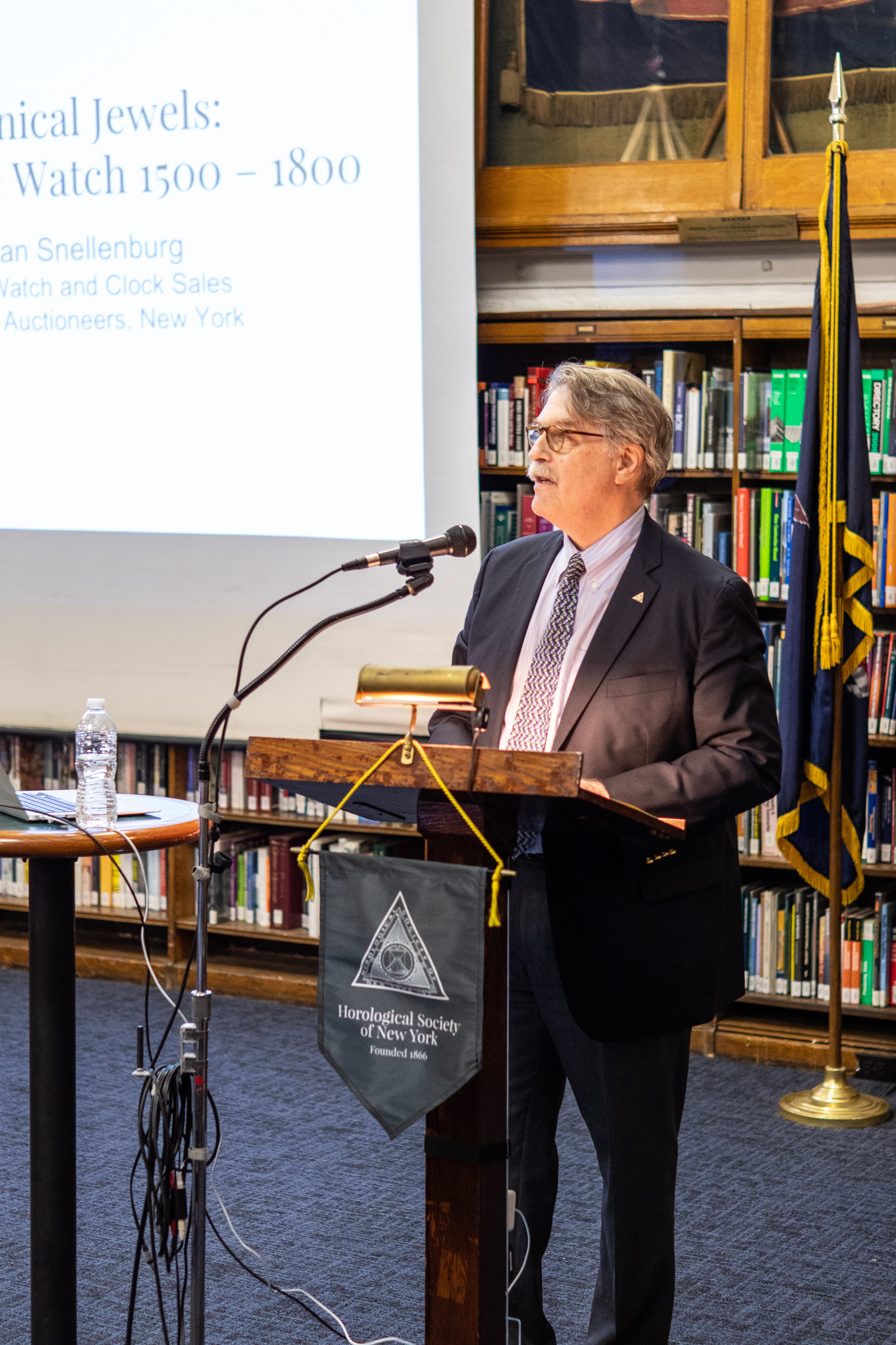




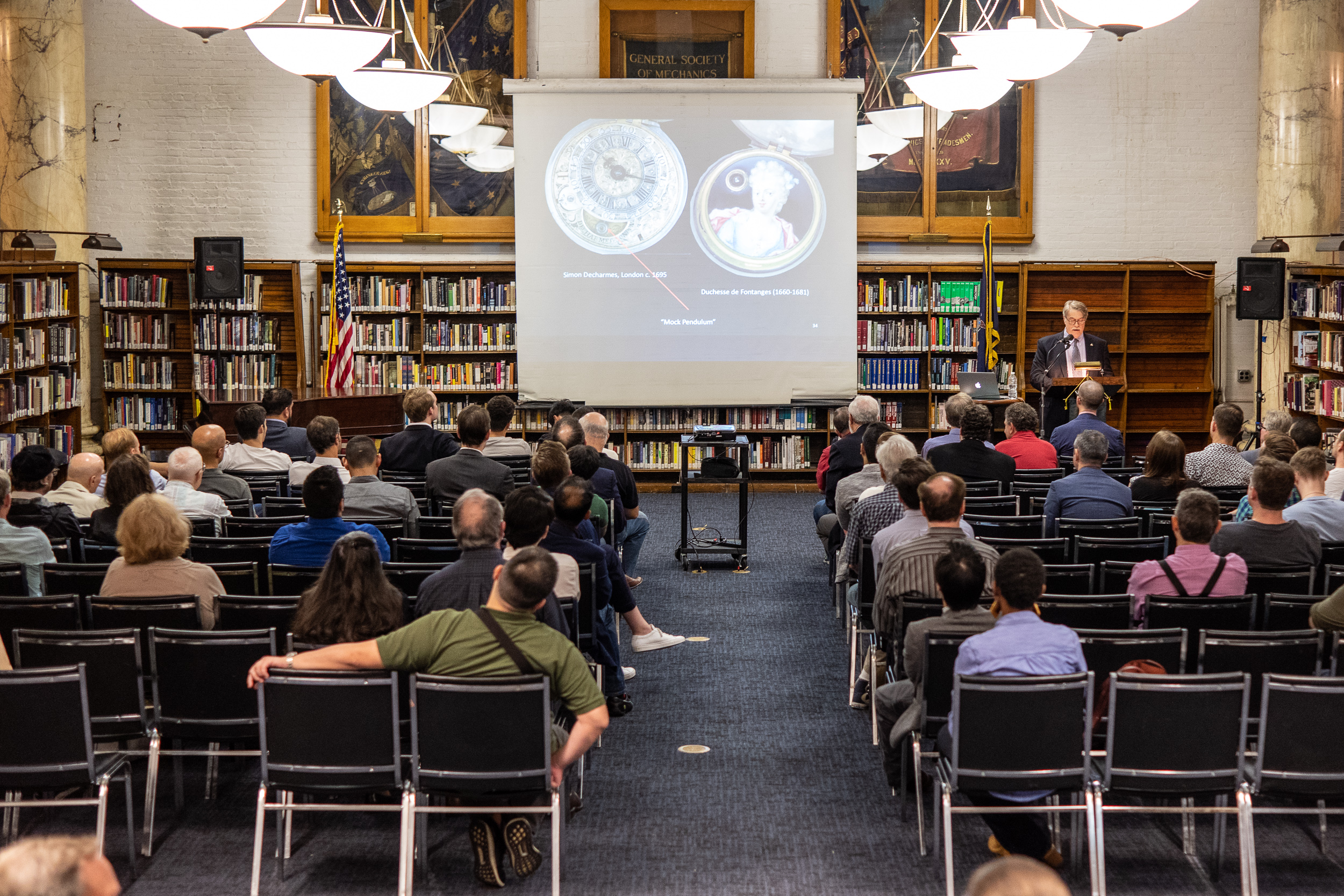
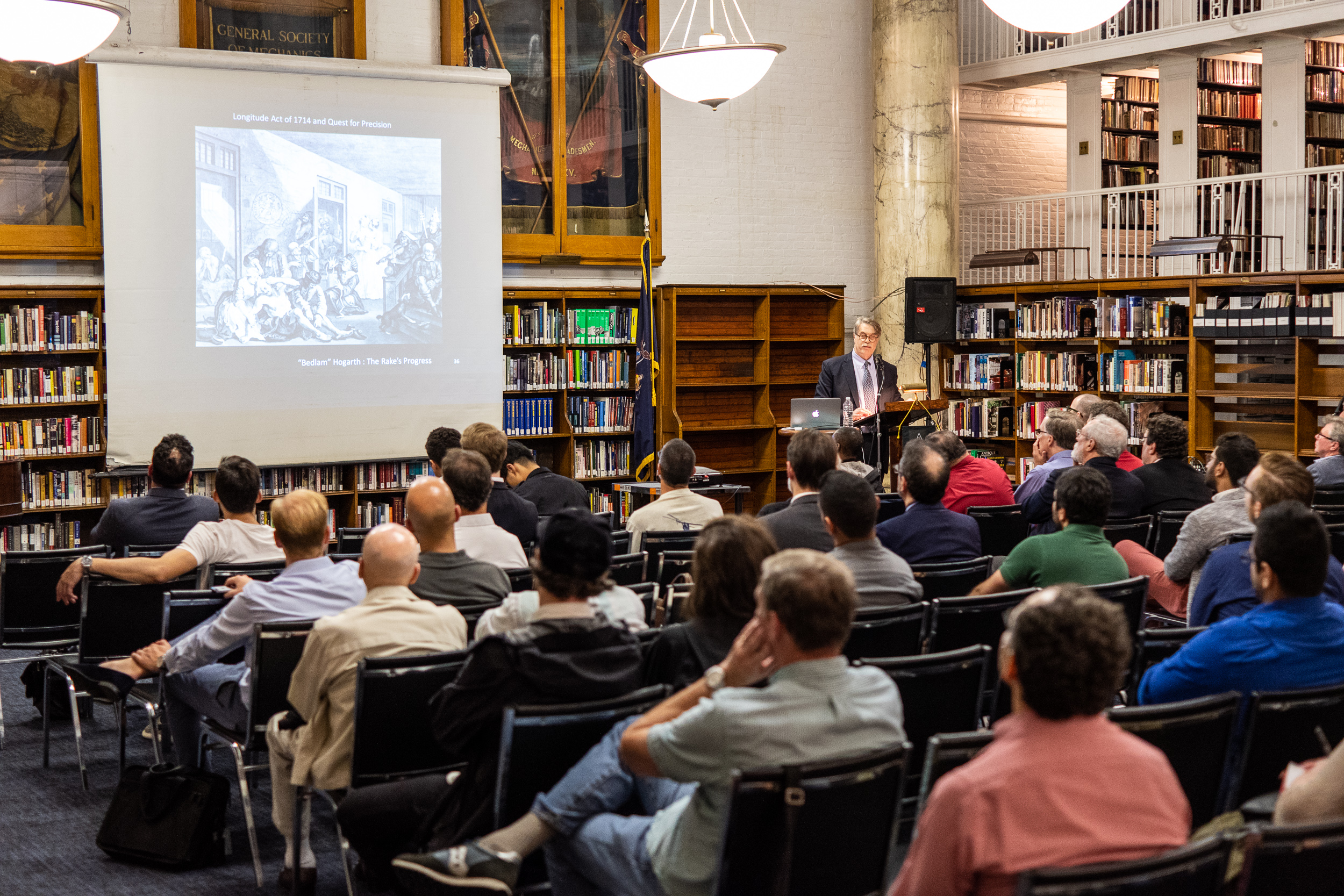
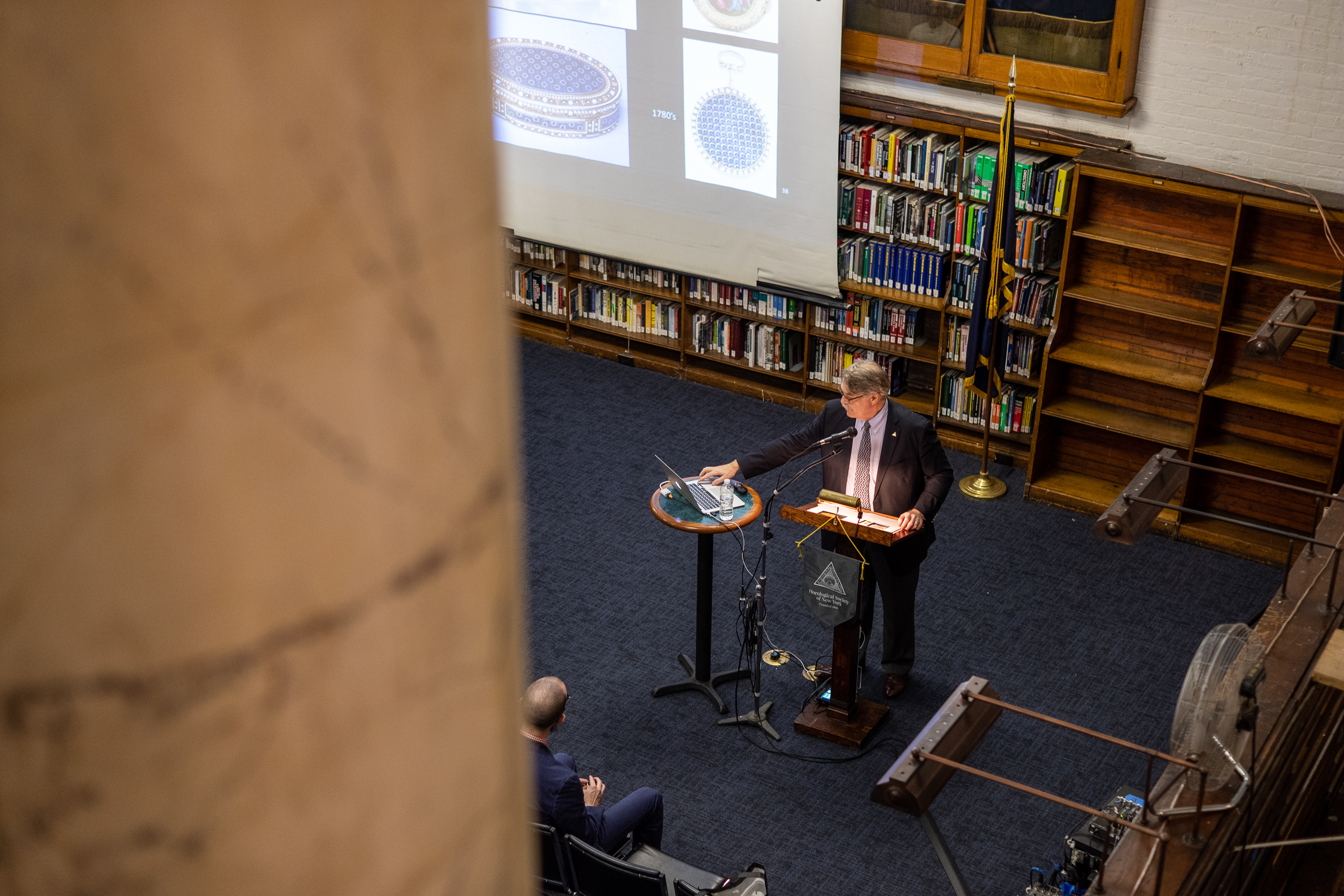
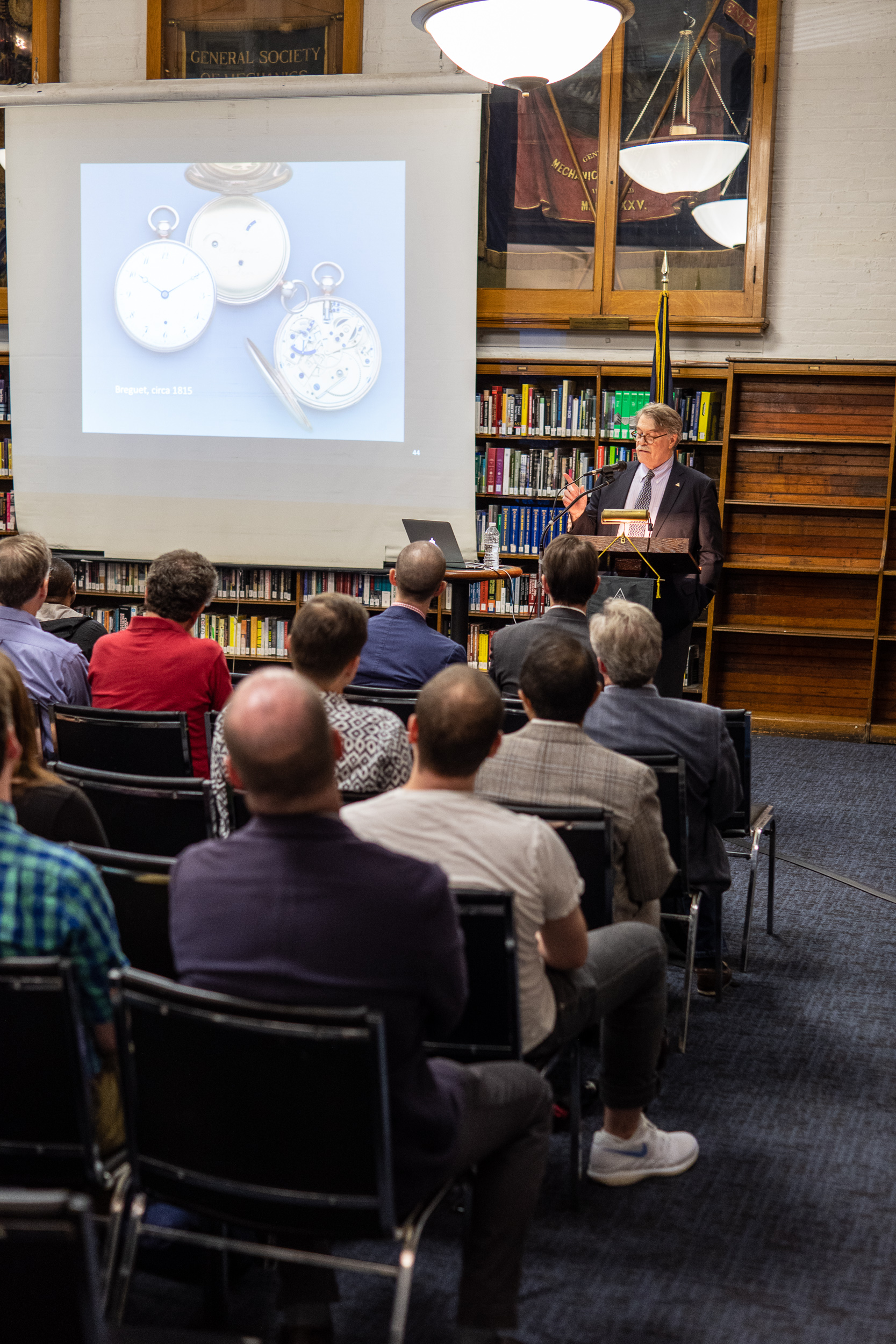
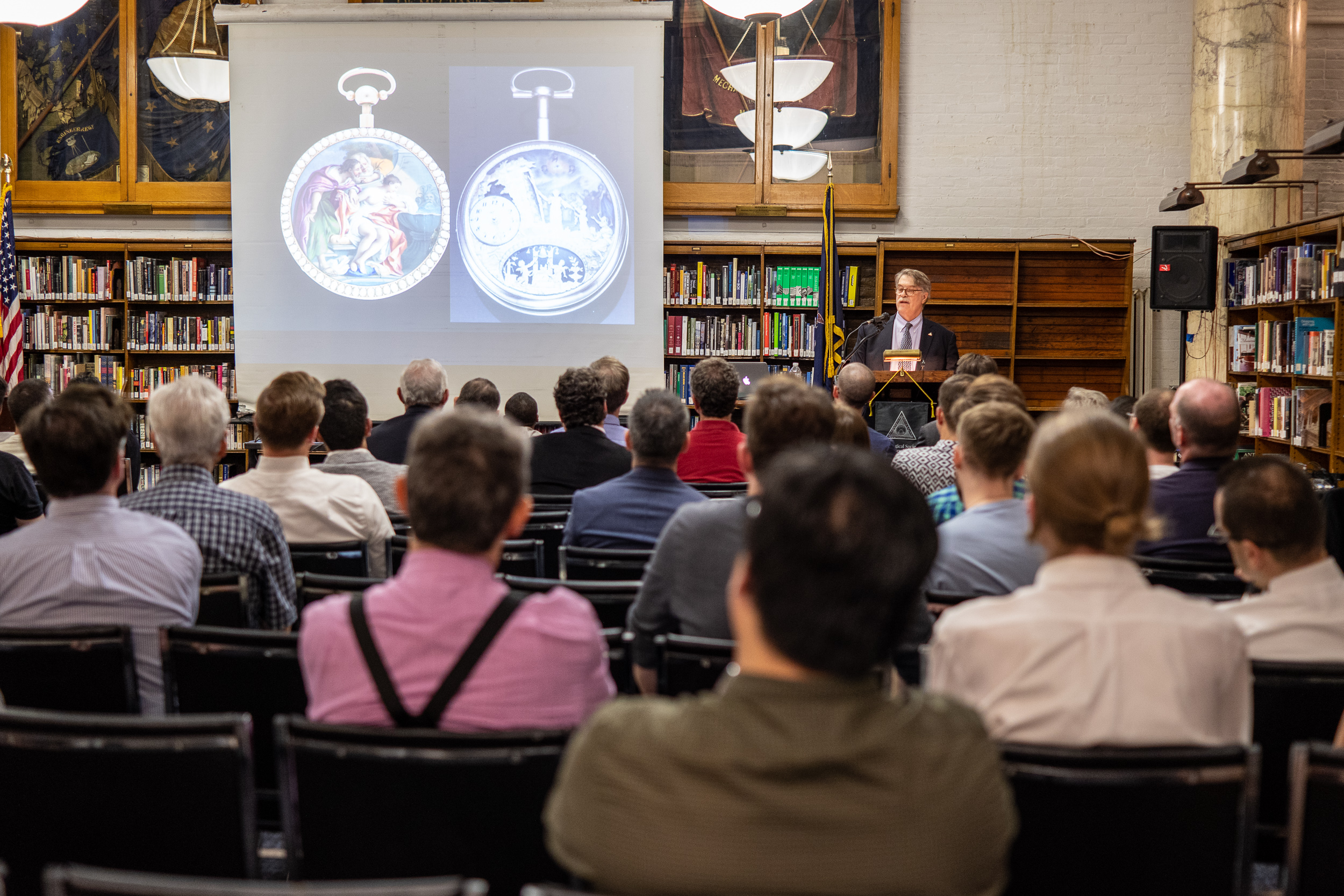



Photography by Atom Moore